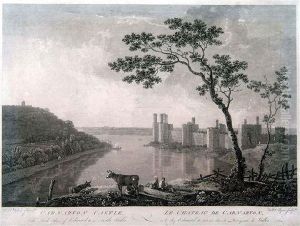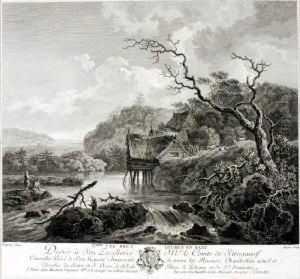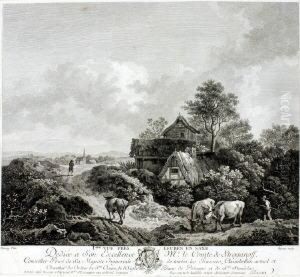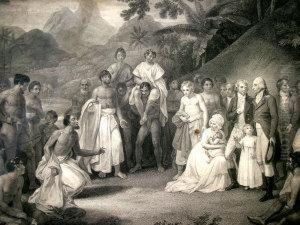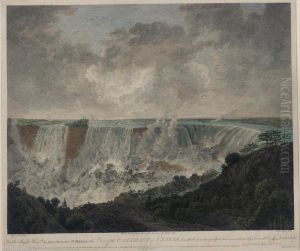William Byrne Paintings
William Byrne was an English engraver and printmaker, best known for his large-scale topographical and architectural works. Born in 1743, Byrne established himself in London, where he became a prominent figure in the British engraving community. He apprenticed with the notable engraver Aliamet and studied at the St. Martin's Lane Academy, an institution that played a crucial role in the development of British art in the 18th century.
Over his career, Byrne collaborated with many artists and was involved in producing prints for some of the most important illustrated books of his time. One of his major works was 'The Antiquities of Great Britain', for which he both engraved and published. This series of works was highly influential and contributed significantly to the Romantic movement's interest in the British landscape and heritage.
Byrne was also a founding member of the Society of British Artists, an organization that aimed to provide a platform for British artists to exhibit their works. His commitment to the arts was evident not only in his own engravings but also in his support for fellow artists.
He passed away in 1805, leaving behind a legacy of detailed engravings that continue to be appreciated for their technical skill and artistic beauty. His works are held in various collections and institutions around the world, serving as important records of historical architecture and landscapes.
